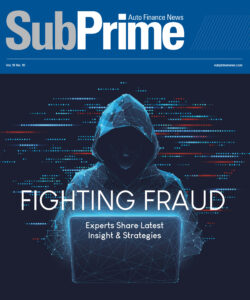FTC Issues Amended Rule on Identity Theft Red Flags
WASHINGTON, D.C. — The Federal Trade Commission recently
announced publication of an interim final rule on identity theft "red flags"
that narrows the circumstances under which creditors are covered by the rule.
Officials explained Congress directed the FTC along with
several banking agencies to develop regulations requiring financial
institutions and creditors to develop and implement a written identity theft
prevention program.
By identifying "red flags" for identity theft in advance, the
agency insisted businesses such as dealerships can be better equipped to spot
suspicious patterns that may arise, and take steps to prevent potential
problems from escalating into a costly episode of identity theft.
Under the rule, the FTC said Red Flag Programs must have
four parts.
First, the program must include reasonable policies and
procedures to identify signs, or "red flags," of identity theft in the
day-to-day operations of the business.
Second, the program must be designed to detect the red flags
of identity theft identified by the business.
Third, the program must set out the actions the business
will take upon detecting red flags.
Finally, because identity theft is an ever-changing threat,
a business or dealership must re-evaluate its program periodically to reflect
new risks from this crime.
The agency first issued the Red Flags Rule in 2007. In
December 2010, Congress enacted legislation narrowing the definition of
"creditors" covered by the rule.
The amended Red Flags Rule now provides that a creditor is
covered only if, in the ordinary course of business, it regularly:
—Obtains or uses consumer reports in connection with a
credit transaction
—Furnishes information to consumer reporting agencies in
connection with a credit transaction
—Advances funds to or on behalf of a person, in certain
cases
The commission is seeking comment on the interim final rule
for 60 days.
After the expiration of the 60-day comment period and a
review of the comments received, officials said the interim final rule will
become final.
The commission vote approving issuance of the Federal
Register notice announcing the interim final rule was 5-0.
The notice has been published in the register and can be
found on the FTC's website through this link.
FTC Asks for Public Input on Proposed Used Car Rule Changes
In other agency developments, the FTC is considering
changing the Used Car Buyers Guide and is turning to the general public for
input.
The Buyers Guide is required under the Used Car Rule, which
goes by the formal name of the Used Motor Vehicle Trade Regulation Rule.
Under this rule — which has been effective since 1985 —
dealers put have to put a window sticker (i.e. a Buyers Guide) on their lots'
used vehicles.
"The Buyers Guide discloses whether the dealer offers a
warranty and, if so, its terms and conditions, including the duration of the
coverage, the percentage of total repair costs the dealer will pay, and which
vehicle systems the warranty covers," the FTC explained in a press release. "In
states that do not permit sales of used cars ‘as is,' or without warranties,
dealers must display an alternative version of the Buyers Guide."
After reviewing public comments it generated on the Used Car
Rule, the FTC has found "that the Rule continues to benefit consumers and will
be retained."
So now, the commission wants public input on changes to the rule
that it contends "would empower consumers without adding burdens to
businesses."
Among the proposed are the following, as listed by the FTC:
—Adding a statement to the Buyers Guide encouraging
consumers to seek vehicle history information and directing consumers to an FTC
website for more information about vehicle histories
—Adding a statement in Spanish to the Buyers Guide directing
Spanish-speaking consumers to ask for a copy in Spanish, if they desire
—Adding catalytic converters and airbags to the List of
Systems on the back of the Buyers Guide; and placing boxes on the back of the
Buyers Guide where dealers will have the option to indicate whether (1) the
manufacturer's warranty still applies; (2) the manufacturer's used vehicle
warranty, such as a manufacturer's certified used car warranty, applies; or (3)
some other used vehicle warranty applies
The FTC went on to note other pieces of the proposal, which
can be found here.
Normal
0
false
false
false
EN-US
X-NONE
X-NONE
/* Style Definitions */
table.MsoNormalTable
{mso-style-name:”Table Normal”;
mso-tstyle-rowband-size:0;
mso-tstyle-colband-size:0;
mso-style-noshow:yes;
mso-style-priority:99;
mso-style-qformat:yes;
mso-style-parent:””;
mso-padding-alt:0in 5.4pt 0in 5.4pt;
mso-para-margin-top:0in;
mso-para-margin-right:0in;
mso-para-margin-bottom:10.0pt;
mso-para-margin-left:0in;
line-height:115%;
mso-pagination:widow-orphan;
font-size:11.0pt;
font-family:”Calibri”,”sans-serif”;
mso-ascii-font-family:Calibri;
mso-ascii-theme-font:minor-latin;
mso-fareast-font-family:”Times New Roman”;
mso-fareast-theme-font:minor-fareast;
mso-hansi-font-family:Calibri;
mso-hansi-theme-font:minor-latin;}

 View The Latest Edition
View The Latest Edition

